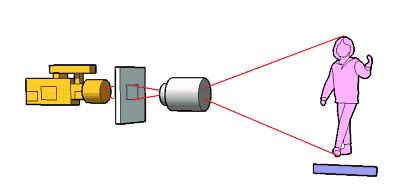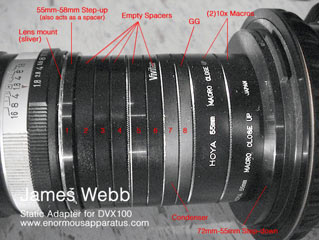
I've been meaning to write something about this for a while, but fortunately just found a site with a better explanation than I could probably manage, and also instructions to build the thing: DOF Machine
Basically the principle is that you use a 35mm lens to project an image onto a ground glass, and then shoot that image on DV. This way you get the cinematic shallow depth of focus that DV cannot usually achieve due to the small size of the CCD.
There are many people online who've built devices to do this, varying from professional-looking machined boxes, to gaffer-taped Heath Robinson contraptions involving CD-R cakeboxes and spinning clear CDs, to amazing conglomerations of filter rings and adapters:

Here's a page with info on the above contraption and some stills of the impressive results: http://www.enormousapparatus.com/35adapter.htm
There are also commercially avaliable adapters such as the Micro35
The hub of discussion about such DIY adaptors is the dvinfo.net Alternative Imaging Methods forum (which also contains lots of other stuff possibly of interest to us video experimentalists such as home made HD cameras!)
There are various complications and drawbacks of course, but it seems pretty straightforward to build one of these adaptors. Definitely something I'll have to experiment with some time.












